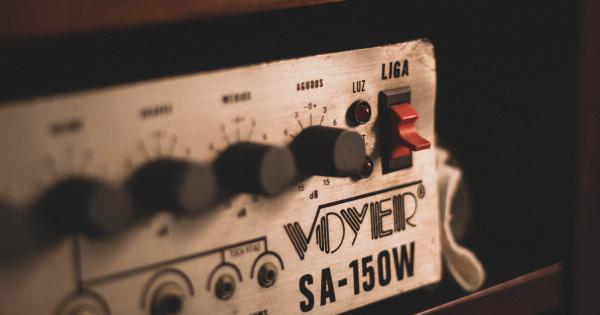Music has been used for therapeutic purposes since ancient times, and has been shown to have a positive impact on physical and mental health.
Epilepsy, a neurological disorder characterized by recurrent seizures, is one condition where music therapy has been found to be particularly effective. In this article, we will explore the science behind epileptic music therapy.
Understanding Epilepsy
Epilepsy is a neurological disorder that affects millions of people worldwide. It is characterized by recurrent seizures, which can be of different types and can vary in severity.
Seizures occur when there is abnormal electrical activity in the brain, which can cause a wide range of symptoms depending on which part of the brain is affected. Common symptoms include convulsions, loss of consciousness, confusion, and emotional disturbances.
Epilepsy can have a significant impact on quality of life, as it can affect a person’s ability to work, drive, and carry out daily activities.
It can also be associated with stigma and social isolation, which can further affect a person’s mental health. While there are medications that can help control seizures, they are not always effective or have side effects that can be problematic.
The Benefits of Music Therapy
Music therapy is a form of complementary therapy that uses music to address physical, emotional, and cognitive needs of individuals.
It has been shown to be effective in a wide variety of conditions, including depression, anxiety, chronic pain, and neurological disorders such as Parkinson’s disease and stroke. Music therapy can be delivered in different ways, such as playing instruments, singing, listening to music, and movement to music.
Studies have shown that music therapy can have a number of benefits for people with epilepsy. It can help reduce the frequency and severity of seizures, as well as improve mood, reduce stress, and improve cognitive function.
One theory is that music therapy can help regulate the brain’s electrical activity, similar to how anti-seizure medications work.
The Science behind Epileptic Music Therapy
While the exact mechanism of how music therapy works in epilepsy is not fully understood, several theories have been proposed.
Research has shown that music can affect the brain in different ways, such as stimulating the release of dopamine, a neurotransmitter that is involved in mood regulation, motivation, and reward processing. It can also increase the production of endorphins, which are natural painkillers in the body.
One of the most promising theories is that music can help regulate the brain’s electrical activity through a process called entrainment.
Entrainment occurs when an external rhythm or beat synchronizes with the brainwaves, leading to changes in brain activity. This can help reduce the likelihood of seizures by preventing abnormal brain activity from occurring.
Research has also shown that music can help activate different parts of the brain, such as the prefrontal cortex and limbic system, which are involved in cognitive and emotional processing.
This can help improve mood and reduce stress levels, which can be beneficial for people with epilepsy.
Types of Music Therapy for Epilepsy
There are several types of music therapy that can be used for people with epilepsy, depending on their needs and preferences. Some common types include:.
Rhythmic Auditory Stimulation (RAS)
Rhythmic auditory stimulation involves using a metronome or other external stimuli to synchronize the brainwaves with the rhythm of the music. This can help reduce the likelihood of seizures by entraining the brainwaves to a more stable rhythm.
Musical Instrument Therapy (MIT)
Musical instrument therapy involves playing a musical instrument, such as a drum or guitar, to improve cognitive and motor function.
It can help improve coordination and strengthen hand-eye coordination, which can be beneficial for people with epilepsy who have difficulty with fine motor skills.
Vocal Music Therapy (VMT)
Vocal music therapy involves singing, chanting, or humming to stimulate the brain and improve mood. It can help reduce stress and anxiety, which can be beneficial for people with epilepsy who experience emotional disturbances.
The Future of Epileptic Music Therapy
While music therapy has shown promising results in the treatment of epilepsy, more research is needed to understand how it works and to optimize its use.
There are also many factors to consider, such as the type of music used, the patient’s preferences and abilities, and the severity and type of epilepsy.
Despite these challenges, music therapy has the potential to be a safe, effective, and non-invasive treatment option for epilepsy.
As our understanding of the science behind it continues to grow, we may see more widespread use of music therapy in the management of this condition.
Conclusion
Epilepsy is a neurological disorder that can have a significant impact on quality of life. While there are medications that can help manage seizures, they are not always effective or have side effects that can be problematic.
Music therapy is a complementary therapy that has been shown to have a number of benefits for people with epilepsy, including reducing the frequency and severity of seizures and improving mood and cognitive function. While more research is needed to understand the science behind it, music therapy has the potential to be a safe, effective, and non-invasive treatment option for people with epilepsy.




























